Ramen pork Chashu is the most popular ramen toppings along with ramen eggs! It is quite easy to make this succulent and tender Chashu at home. Although it takes a bit of time to make, it is well worth your patience and effort for it is truly a melt in the mouth experience when done well!
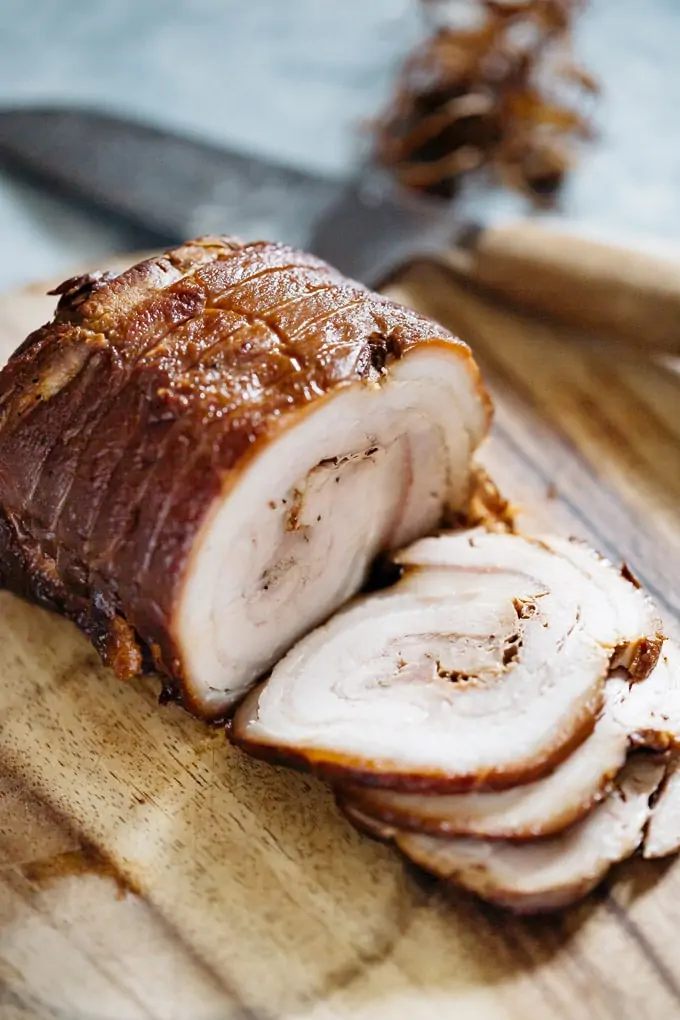
What is Chashu?
The pork meat in ramen is commonly called “Chashu” or “Cha Shu” and it means grilled or fried pork. Chashu is the Chinese reading of Kanji script 焼豚 but it can also be read as Yakibuta in Japanese. Despite the kanji reading of “yaki”, which means grilled or fried, the pork meat you usually find in ramen is more like a braised pork in a soy sauce base.

Which cut of Pork suits Chashu?
The answer is Pork belly. Pork belly has an even fat distribution so that when it is braised, you get that melt in your mouth texture. I found a decent pork belly package at Aldi weighing about 1.8 lb (800g). You can use other cuts of pork, however the fattier the meat, the more melt in your mouth texture. Leaner meat tends to dry out especially when the meat is braised in soy sauce and other condiment mixtures on low heat for a long time.
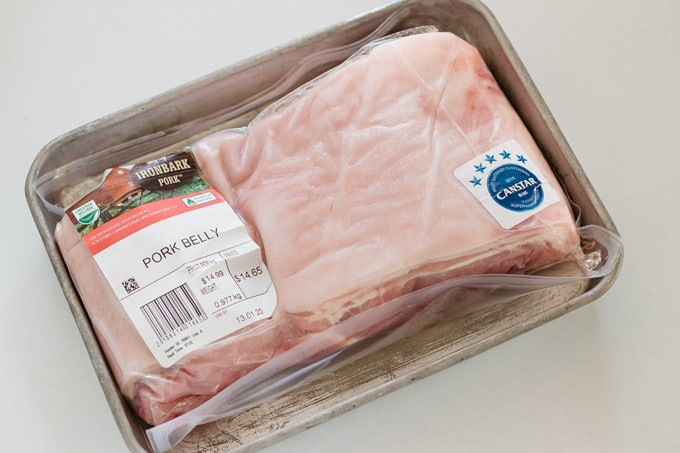
How to tie a pork belly?
Why even tie the pork belly? The main reasons are to keep the meat shape intact for its appearance and also to increase the moisture of the meat. However, tying the meat might be a little difficult if you have not done this before, so I have included a photo tutorial as well as a mini-movie below to help you.
In the example, I used 2-3 tea towels to show the process above and you can practice with something similar before you tackle the real meat. Note that the length between each circle of cotton twine should be about 0.6 inches (about 1.5 cm). When the meat is cooked, it will shrink a little, so you need to ensure that it is wrapped up tightly. This process can be checked against the mini-movie in the recipe card.
6 key steps to successful chashu
1. Take the meat out of the fridge 30 minutes before
The rule of thumb is to take the meat out of the fridge 30 minutes before starting to cook or prepare. If the meat is cooked straightaway, the center of the meat will remain cold. So the cooking heat will not distribute evenly.
2. Tenderize
Using a rolling pin or a meat mallet, tenderize the pork belly. This step makes rolling and tying the meat easier. Then roll up the pork belly lengthwise with the skin facing outside.
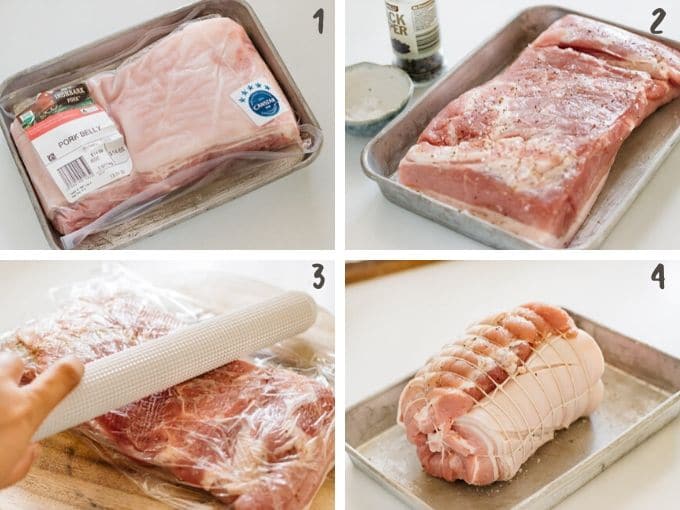
3. Brown
Heat 2 tbsp oil in a large skillet over medium heat to sear all around until deep golden brown. This is an irreplaceable process to remove excess fat. Adding this extra step makes sure the end result is less greasy and delicious.
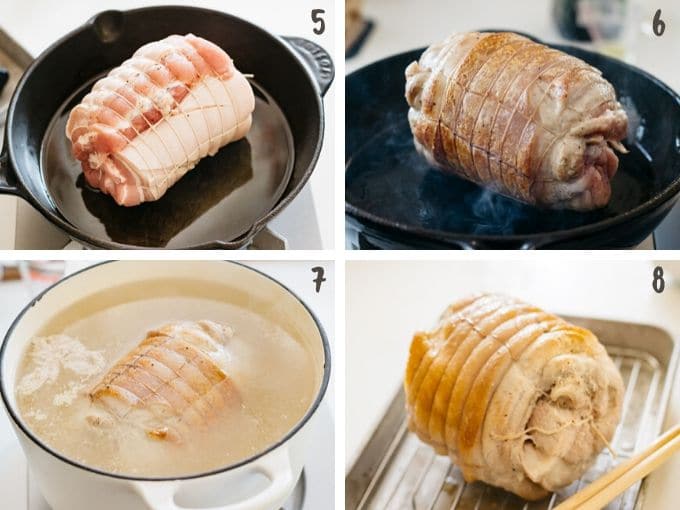
4. Boil without seasoning
In order to achieve that melt in the mouth texture, boil the prepared pork belly in simmering water over low heat for one hour without any seasonings. This step is also irreplaceable to remove excess fat and gamey taste of the pork belly. Simmering with seasoning for a long time will cause the meat to become firm and dry due to the salt content in the broth.
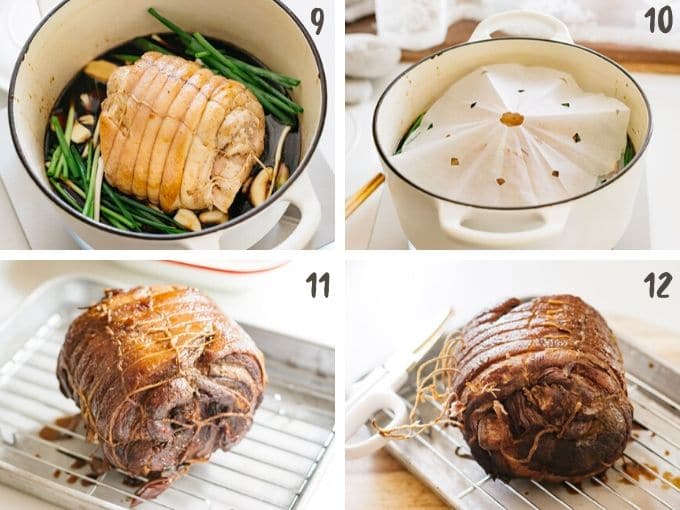
5. Simmer with seasonings
Finally, just simmer the well prepared pork belly. Add soy sauce, sake and sugar in a ratio of 2:1:1. I like the sweeter taste so I add honey as well. However, do not add mirin! Mirin is an indispensable condiment in Japanese cooking, though Mirin has a tightening effect due to animal protein. Therefore for making a perfect Chashu recipe, it is better to avoid using mirin.
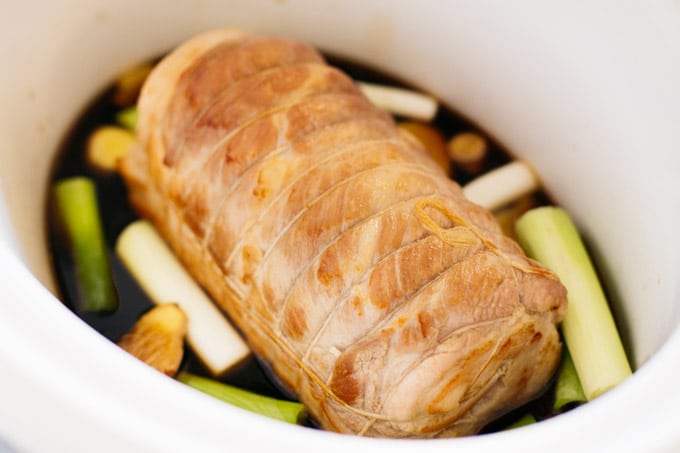
6. Use Otoshibuta (drop lid)
Otoshibuta (drop lid) is often used in Japanese cooking. Due to the amount of fat in the pork, it does not completely submerge. So it is important to use Otoshibuta to make sure the seasoned broth circulates over the rolled pork belly.
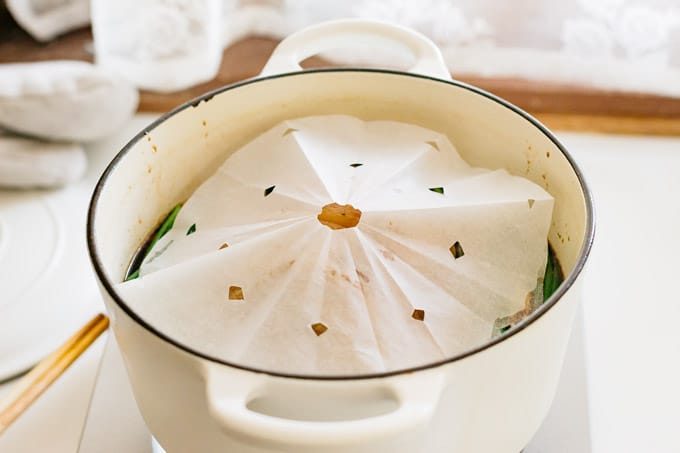
How to store Chashu?
It is better to refrigerate the meat overnight in the cooking sauce. Because it will be easier to slice and will marinate in the sauce more. I usually slice the Chashu about 0.2 inch ( 5mm) each and cling wrap 4 slices together for later use. Place them in a ziplock bag and it will keep for about a week in the fridge and 4 weeks in the freezer.
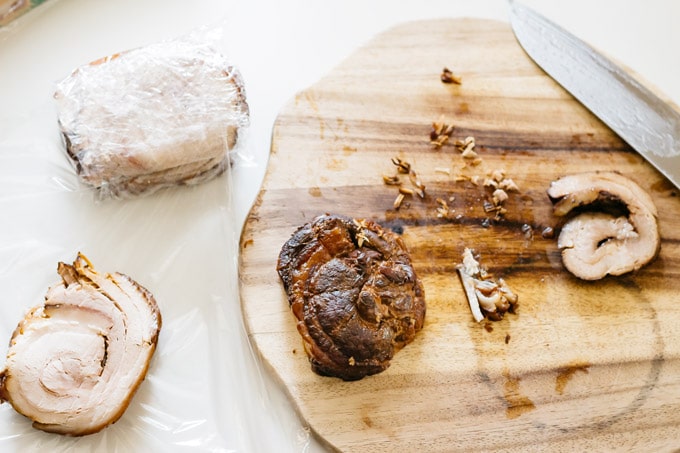
Chashu pork for other dishes
Now of course as the name suggests, this Ramen Pork Chashu is the most common ramen topping for a bowl of ramen noodles such as Shio ramen, Shoyu Ramen and Hiyashi Chuka, but you can also eat this as a main dish with rice. Chashu edge cut offs is a great ingredient for Yakimeshi Japanese fried rice. Or you could make Chashu Donburi (bed of steamed plain rice topped with Chashu)
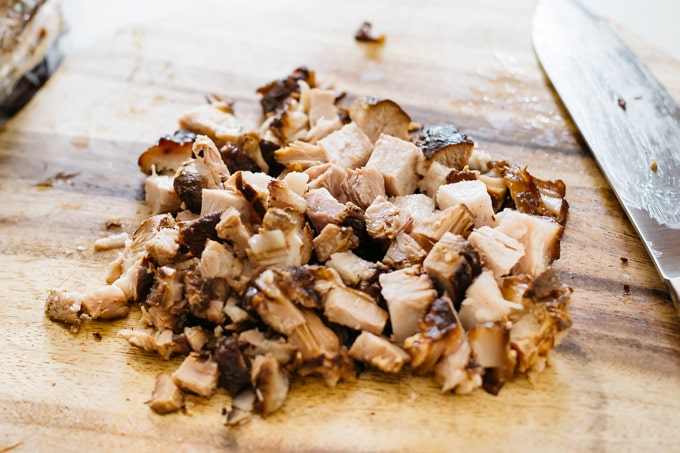
Chashu cooking sauce for other uses
Keep the cooking sauce and use it for something else too. Strain the cooking sauce using a fine mesh sieve, remove and discard garlic, ginger, and scallions. Use the sauce for marinating soft boiled eggs, base for Shoyu ramen with mixing with basic ramen broth. Also instead of using just soy sauce, use this sauce for Hiyayakko cold tofu.
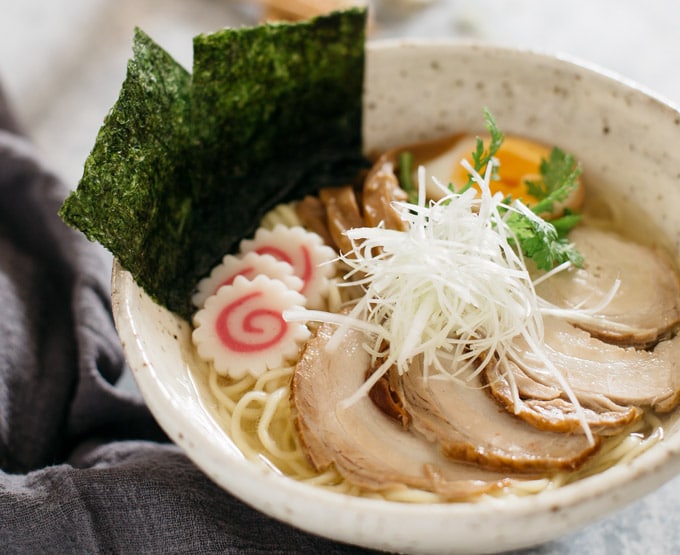
Stay Connected
If you like the recipe please rate the recipe and leave comments below. Also don’t forget to follow me on Youtube, Pinterest, Facebook, Twitter and Instagram. This way you keep up to date with all the latest happenings on Chopstick Chronicles. Don’t forget to Sign up for a weekly newsletter so you never miss out on new authentic delicious Japanese recipes! Sign up form is on the right-hand sidebar.


Equipment
- twine
Ingredients
- 1.8-2.2lb/0.8-1kg pork belly
- 2 tbsp cooking oil
- 1 cup soy sauce
- 1/2 cup sugar
- 1/2 cup sake
- 1/4 cup honey
- 3 cups water
- 2-3 scallions
- 1 knob ginger about 20g/07oz
- 2 cloves garlic
Instructions
- Leave pork belly in room temperature for 30 minutes before cooking.
- Salt & pepper over the pork belly. Cover with cling wrap and tenderize with a rolling pin or a meat mallet.
- Roll the pork belly into a cylindrical shape.
- Tie up the pork belly tightly with cooking string so the meat holds its shape (see the photo instruction in the post or watch the mini-movie above).
- Heat the oil in a frying pan, brown the outside of the tied pork belly all around.
- Transfer the pork belly into simmering water (not listed in the recipe. You need enough water to just cover the pork belly, (I used about 8 cups of water) and cook for one hour over low heat.
- Drain the cooking water.
- Add sugar, sake, soy sauce, water, scallions, garlic and ginger to the pot with the pork belly bring to boil then turn the heat down to low. Place a drop lid (otoshibuta) over the pork belly and simmer for one hour.
- Skim scum off the cooking sauce at times and rotate the pork belly sometimes too.
- After one hour, turn the heat off and leave the pork belly in the cooking sauce. *1
- After the pork belly and the sauce cool down, refrigerate it overnight.
- Take the pork belly out of the pot and cut the twine to remove carefully.
- Slice the chashu 0.2 inch (5mm) wide and serve as ramen topping or store for later use. *2
Video
Notes
- You can transfer to a container or leave it in the pot. I have enough space to leave the pot in the fridge, so left it in the pot.
- If you are going to eat the Chashu as a dish, remove the fat and discard the scallions, garlic and ginger cooked with pork in the pot. Drain the sauce with a sieve and pour the liquid into a small saucepan. Bring it to boil then, reduce the heat down to a simmer. Continue to simmer the sauce until it is reduced and thickened. Pour this over the sliced Chashu and serve. Also see other suggestions to use the sauce in the above post.
- Cling wrap the sliced chashu and place in a ziplock bag to store in freezer. It stores about 4 weeks in freezer and a week in fridge. I usually chop up the edge both ends of the rolled chashu to small bits and use them for “Chashu Don” or as fried rice or stir fry ingredients.
- To store the cooking sauce, strain the cooking sauce with fine mesh sieve and discard scallions, garlic and ginger. It stores for a week in fridge and a month in freezer.
Nutrition
Chopstick Chronicles is a participant in the Amazon Services LLC Associates Program, an affiliate advertising program designed to provide a means for sites to earn advertising fees by advertising and linking to Amazon.com. As an amazon associate I earn from qualifying purchases.
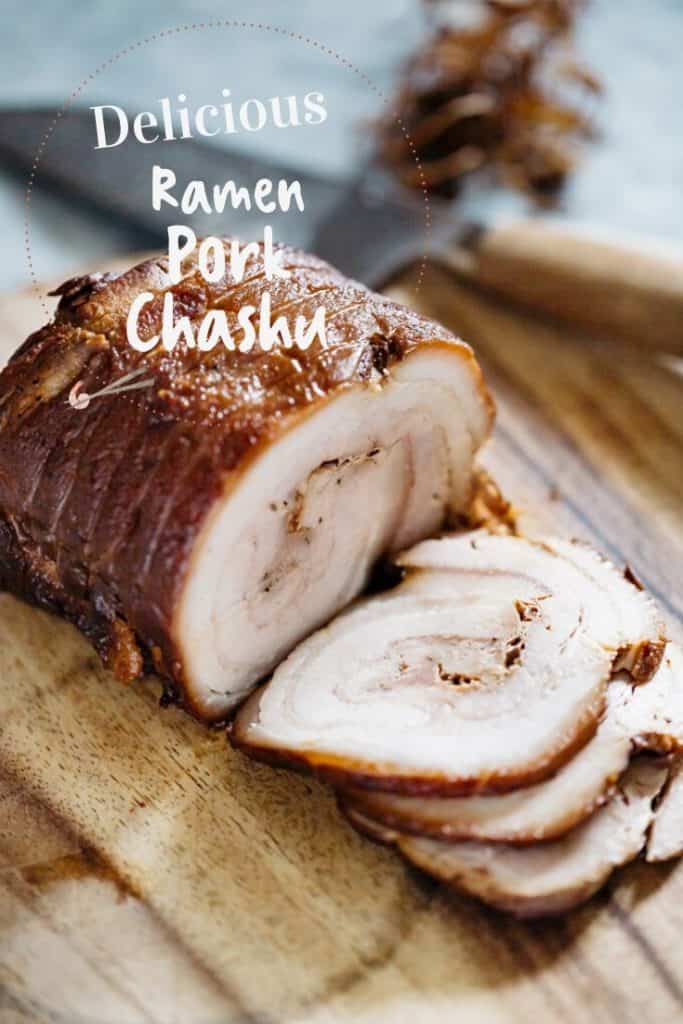
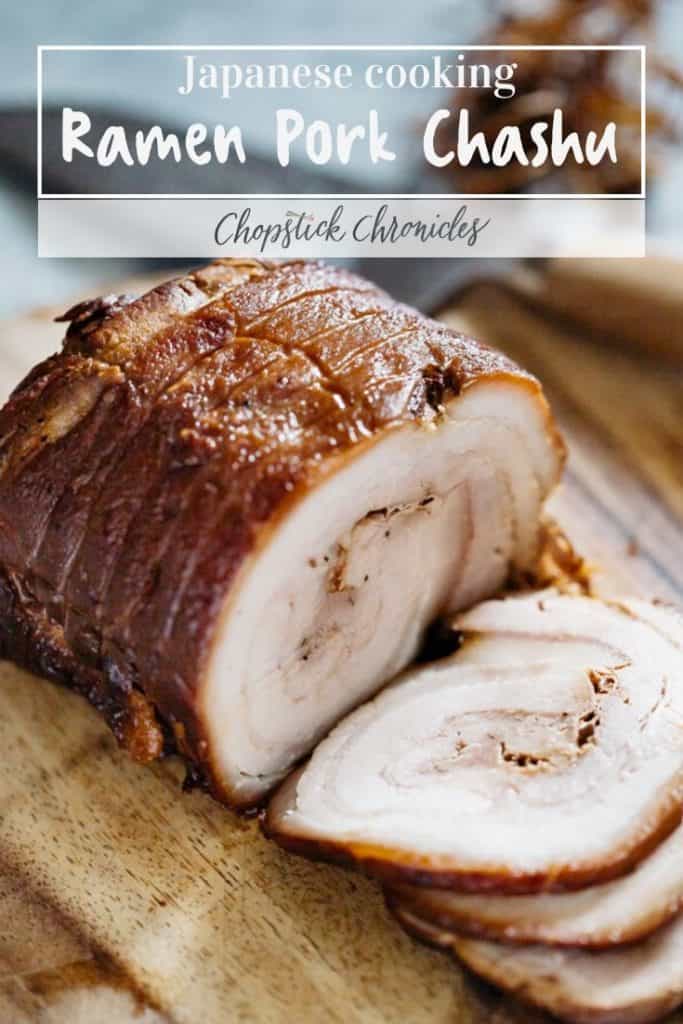
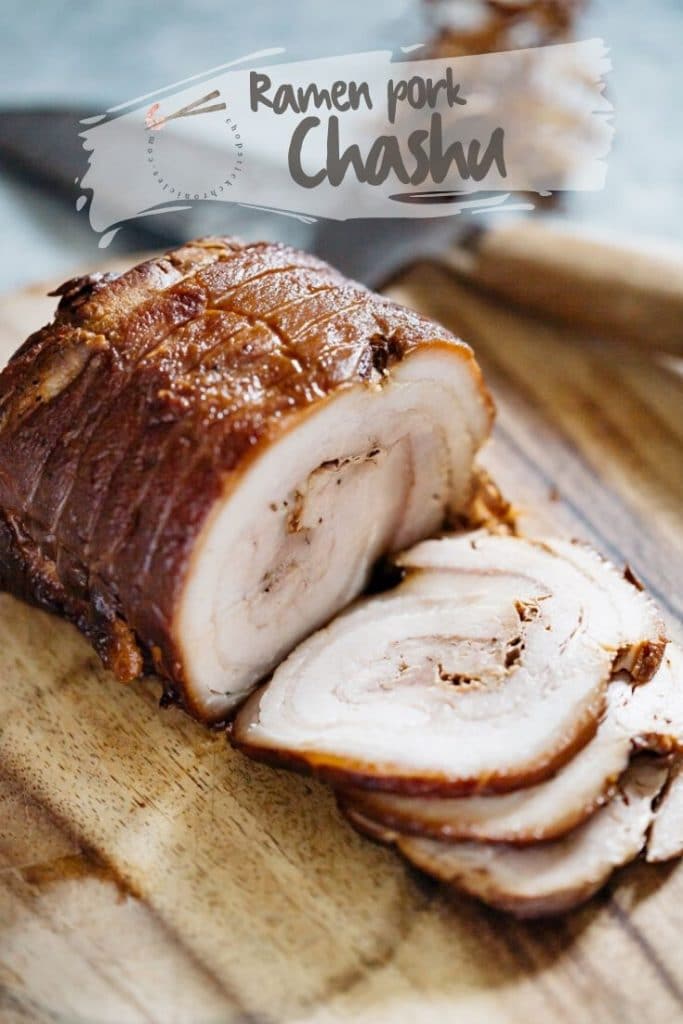



I am confused says to simmer for a hour towards top, and then in the instructions under recipe says to put pork belly in simmering water then turn to low? It just seems it would never cook if it was on low for two hours total with just water, and the other with the marinade..Explain which it is?
Agreed, this language is super confusing. In the long instructions it says boil the pork in simmering water, then it says put the pork into simmering water and turn the heat to low on the recipe card. Please be specific Shihoko, recipes cost a lot to make (time and actual cost).
Can you skip the sugar in the sauce?
Hi Sam, yes but will be taste different though…. If you are concerning about sugar intake, I would replace it with monk fruit sugar.
I have not tried this yet but I am considering it. Is this really a skin on pork belly? It seems the skin would be tough to eat if left on.
Hi JParris, yes it had a skin/fat on the pork belly
I would heat the chashu in the broth for a short time before serving ramen. Otherwise the skin is going to be tough.
Is all pork belly created equal? I feel like the ones from my butcher always have like an inch of fat but I don’t see the giant layer of fat in your photos.
And does this affect the recipe?
Hi K, because I choses not too much fat one as I don’t like fat of any meat very much.
The best melt in your mouth recipe ever! I love it <3
THANK YOU for having shared this with us
You are welcome and thank you for making it with my recipe Jonathan 😀
Can I use mirin instead of sake? Thanks
Hi Dave, yes.
In your instructions you say not to use mirin because it can cause tightening of the protein. Yet you say it is ok to use mirin instead of sake. Mirin is basically sake, sugar and water.
I have made this recipe 5 times now!. Its really good! thank you for sharing this!
Do you need to heat it at all or place it straight in the ramen bowl?
I just slice and top on to the ramen and pour hot broth will heat up Chashu usually.
Making this for the 2nd time! Absolutely loved it the first go round and salivating thinking about enjoying it tomorrow! Thanks you for the amazing, authentic recipe!
Thank you so much for the 5 star rating and lovely comment 😀
Hi there
What is the purpose of boiling with water first rather than just boiling for 2 hours in the seasoned broth? Thanks!
Hi Anne, it is explained in the heading 4 in the post.
I have been salivating for a good bowl of ramen ever since the C-19 pandemic lock-downs. This recipe will go a long way to satiating the craving.
Sharing your family recipe for Chashu is something I would like to try when I can get out and find the proper ingredients. It looks challenging, yet so delicately prepared.
ありがとうございました
Arigatōgozaimashita
You are welcome 😀
I am so excited to find your recipe and excellent photographs. I work next door to a Thai restaurant that has Chashu Pork as a protein choice for their Ramen. It is just fabulous and I’m hoping your recipe is close to theirs. It seems there is a hint of a spice in the meat (reminds me of nutmeg) are any such spices ever added to the braising process? or does the cooking process created the illusion of other spices? thank you
Thank you so much for your detail instructions but I missed the part on when I put in the honey??
Hi Jenny. Thank you for letting me know. You need to add in step 8.
I’ve been going to your website on and off for while now. Your instructions and the design of the site are really great. This recipe is so good, and I doubt I’ll ever roast my pork again in the oven. Yea, slightly more time consuming and more dirty dishes, but the results were worth it. Thank you.
Hi Tiel, yes it is time consuming but I am not sure what you mean by “more dirty dishes” as it is cooked in a slow cooker?
Do you make your own paper drop lids?
Hi Joe, Thank you for excellent rating. Yes I do.
Could you tell me what you use? Thanks!
Hi Joe, see this post. Kaboacha no nimono
Hi! I was wondering, do I have to leave it over night in the fridge? Or can I eat it once it is done? Or possibly make it in the morning and leave it in the fridge until dinner time?
You don’t have to but it will make the flavour penetrate through the pork belly and also you can remove excess fat if you like.
Hi.
it looks delicious.
I dont have the possibility to do any shopping right now and i don’t have sake or sherry. are there any other substitutes, or can i leave it out completely?
kind regards Signes
Hi Signe, you can leave it out if you can’t get it. See Japanese food substitution.
Hi, thanks for sharing the tips and the recipe. Do you recommend to keep the water used to boil the pork belly as broth for other dishes?
Hi Clariss, I used it for base of shoyu ramen.
Hi!
How would you suggest warming the chashu back up once it had sat in the fridge overnight?
Hi Jo, because it is thinly sliced, once added to ramen bowl and pouring over hot ramen broth warm it up 😀